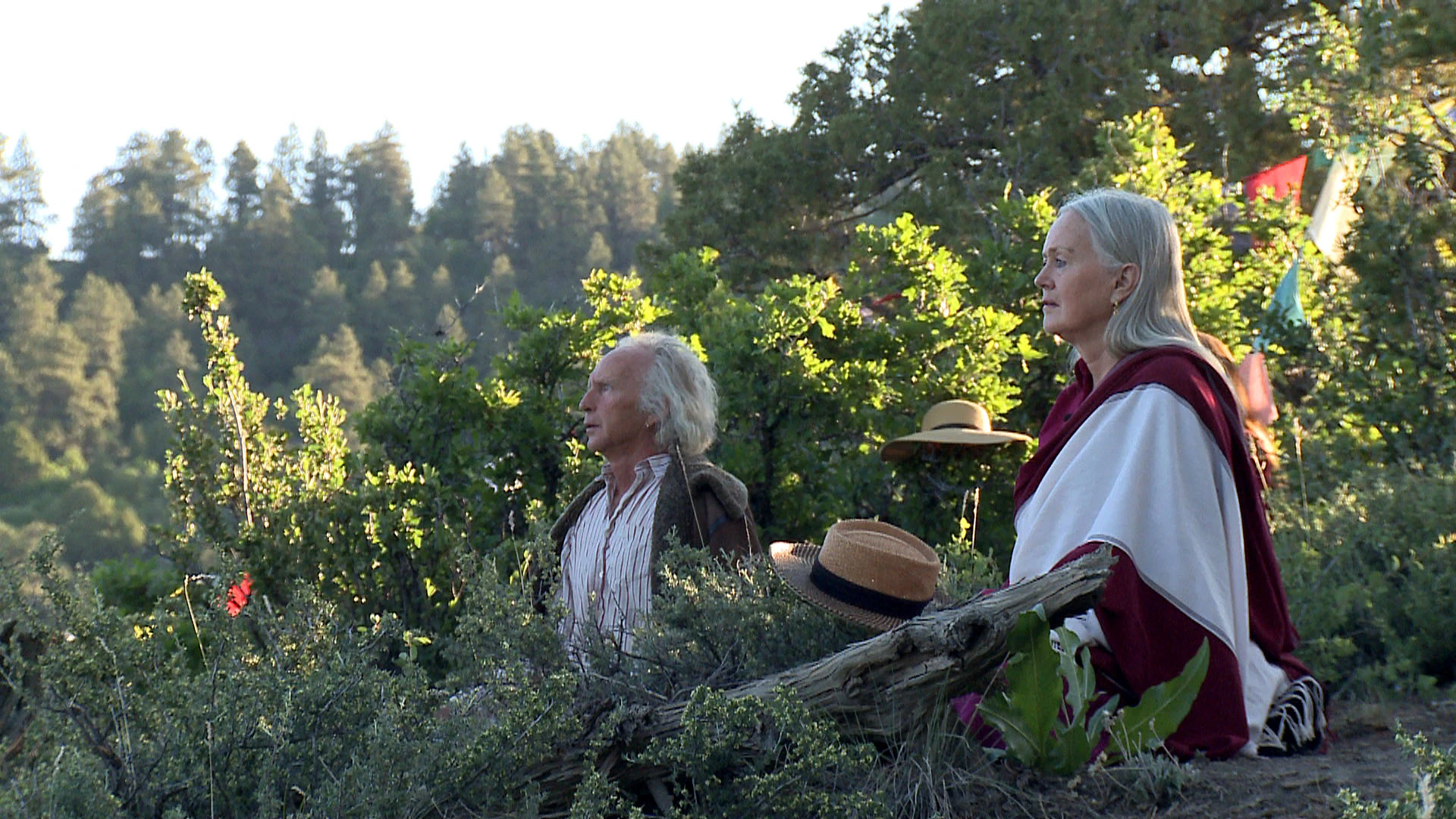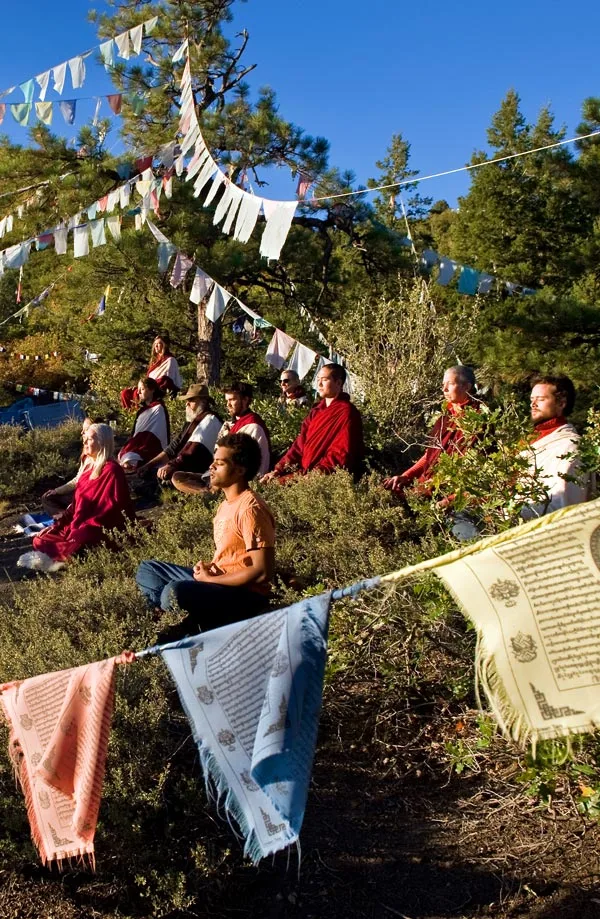
Tara Mandala – International Buddhist Community
Tara Mandala is a vibrant international Buddhist Community with groups around the world. It was established in 1993 by Lama Tsultrim Allione and her late husband, David Petit, to foster the development of innate wisdom for the benefit of all beings.
“Tara Mandala was created to bring people together to support each other, practice, and do retreat in order to reach realization. The second purpose of Tara Mandala is to be a temenos for the emergence of the sacred feminine, through the lens of Vajrayana, leading to the balance of genuine partnership between the masculine and feminine in our world.” – Lama Tsultrim Allione
Tara Mandala, Inc. was incorporated as a Colorado Nonprofit Corporation in 1994. Tara Mandala is a tax-exempt 501(c)(3) religious organization and church. Tara Mandala’s strategic vision is guided by its Board of Trustees who provide overall governance, set policy, and implement bylaws. Tara Mandala’s Spiritual Director, Lama Tsultrim Allione, and The Prajna Council develop our spiritual practice. In order to preserve Tara Mandala’s core principle of the strengthening of the feminine voice, the organization commits to always having a majority of women as trustees on the Tara Mandala Board who identify with the feminine and the need for it in the world.
Tara Mandala day-to-day operations are overseen and managed by Executive Director, Cady Allione, and Assistant Spiritual Director, Dorje Lopön Chandra Easton. The Executive Council provides support and oversight on key policy and operational issues.
The hub of the Tara Mandala community is the 700-acre dharma center in Pagosa Springs, Colorado. Through the center and the Global Sanghas, Tara Mandala offers a complete path of meditation practice, study, and deep retreat in the tradition of Vajrayana Buddhism. Tara Mandala is dedicated to bringing people to realization through the Buddhist teachings. Tara Mandala is committed to fostering a welcoming atmosphere for all people to explore the teachings of the Buddha, and we are committed to cultivating a community that values diversity and inclusion.
Since founding Tara Mandala in 1993, students have continued to be drawn to the land and Tara Mandala Global Sanghas sprung up around the world. Today there are more than 40 Global Sanghas in nine countries. These local practice groups offer teachings, online offerings, local practice sessions, and individual support. Groups are led by Senior and Apprentice Teachers in Lama Tsultrim’s lineage and students authorized to facilitate meditation practice sessions. Lama Tsultrim has clarified and organized long-term practice paths for students into what is now established as the Gateway and Magyu lineage programs.
Tara Mandala has a rich history of manifestation and development in its first two decades of existence. The Board of Trustees completed a strategic planning process to identify the core priorities that will guide Tara Mandala’s work in the coming years in November of 2016. Through the strategic planning process, the organization committed to short, medium and long-term goals to ensure the Tara Mandala is moving toward the manifestation of chosen priorities –and Lama Tsultrim’s vision.
History of Tara Mandala
The vision of Tara Mandala began in the early 1970s when Lama Tsultrim was a Buddhist nun. She had a vision of a retreat center in the West where practitioners could achieve the depths of meditation that was achieved in ancient Tibet and the interface of between Western psychology and Buddhism could be explored. Through following dreams and visions, Lama Tsultrim and her late husband David Petit found the land that became Tara Mandala Retreat Center on September 18, 1993. In 1994, they formed the organization of Tara Mandala, legally incorporated as a 501(c)(3) designated as a church. The organization eventually purchased the 700-acres of land in Southwestern Colorado, near Pagosa Springs. On November 12, 1994, Lama Tsultrim consecrated the land. At the time of the consecration, a very hard rain fell so it was impossible to hear inside the newly constructed canvas yurt that served as the temple. Then, at the end of the rain, a beautiful rainbow appeared, actually on the land itself, rather than in the sky!
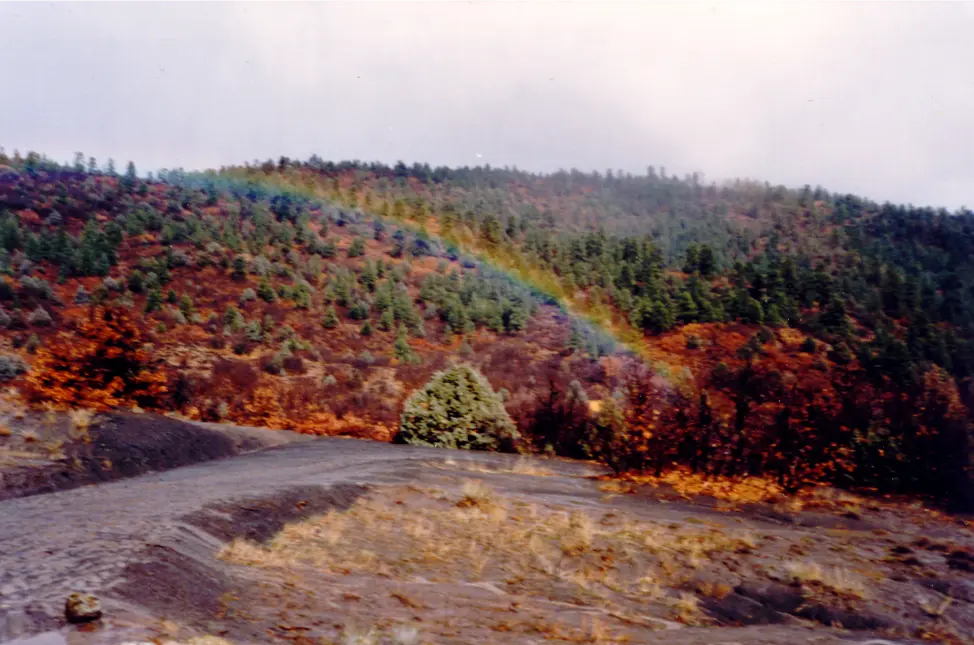
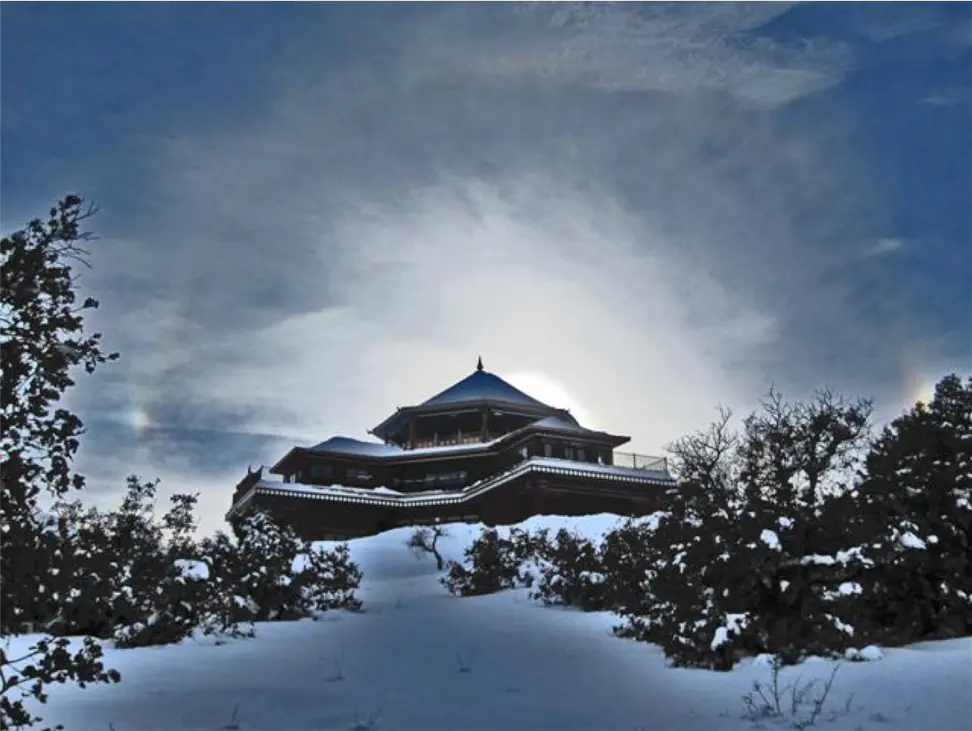
Tara Mandala was made possible by the generosity of many donors, some large and some small, who often came forward just when needed, allowing Tara Mandala to develop with no residual debt. Starting with little more than her vision of the dharma center and David’s help, the first structures were constructed on the land. It began with a collection of teepees, tents, and yurts, and then after ten years, they built the Community Building which opened its doors in October of 2005. Prajna Residence Hall followed in 2007 as well as four solitary retreat cabins. In 2007, work for the 12,000 square-foot, three-story temple and library began. Lama Tsultrim had a dream-vision of this temple in 2001 through the blessing of Vimilamitra. The first practice in the temple took place at the winter solstice in 2008. It was held in the third floor because the rest of the temple wasn’t completed. A spherical rainbow appeared over the temple on this day.
Over the next few years, the statues for the temple were completed by Bijaya Shakya of Bodhi Arts in the Patan section of Kathmandu, Nepal. He and his family of 21 people, who have been master statue makers in Nepal for generations, all worked to complete the statues of Machig Labdrön, Buddha Sakyamuni, Prajnaparamita and the 21 Taras in the Longchen Nyingtik tradition. Tulku Sang-Ngag Rinpoche proclaimed these we the most beautiful statues of Tara in the world. Work on the temple continues under the artistic direction of Lama Gyurme Rabgye, Tibetan artist from Mindroling Monastery in Tibet. Currently, he is working on ceiling mandalas for the Trikaya Tara Temple.
Due to a five year grant, Tara Mandala was able to hire Tibetan librarian Jampa Dradak to create our Tibetan-English library on the second floor of the temple. Similarly, dharma blossomed through teachings from Lama Tsultrim, visiting Lamas as well as other teachers who were invited to teach and through the cultivation of Senior Teachers and Global Sanghas around the world.
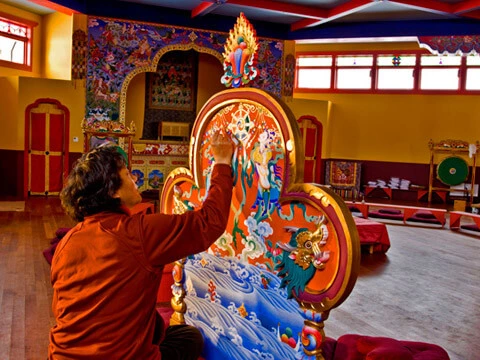
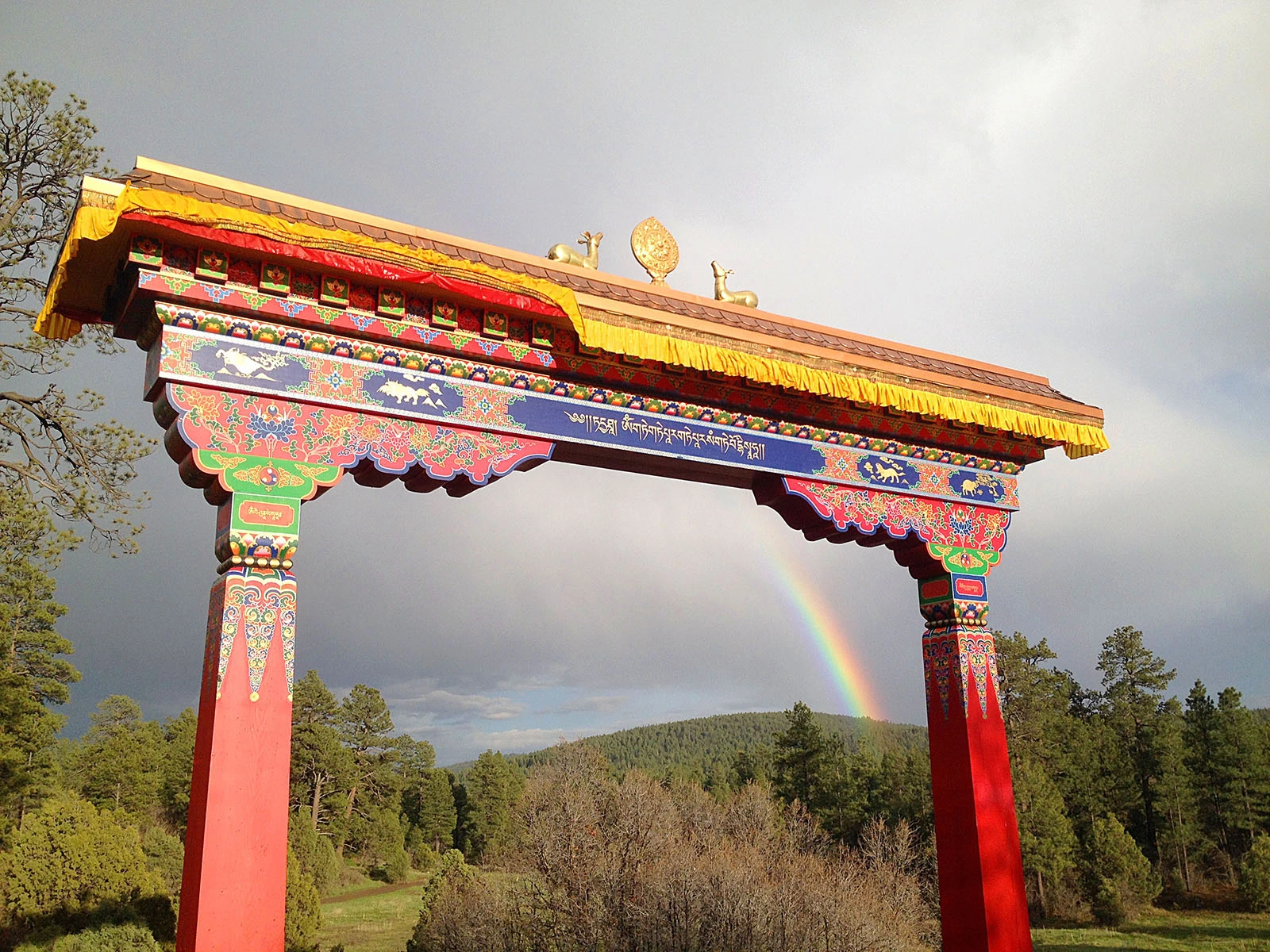
Tara Mandala Retreat Center has been recognized as ‘gNas’ or power place by many Lamas in particular Ad.zom Rinpoche who saw in a vision, that the land is the body of Tara and predicted many yogins would reach rainbow body on the land. Ad.zom Rinpoche also revealed a Troma terma on the land in 2002, after the revelation there were extraordinary signs such as vertical rainbows in the meadow, rainbows rolling next to the car, and rainbows on all the clouds in the sky, making the land also Tersa (a place where hidden Dharma treasures are revealed). Tara Mandala a became to be known as a power place for practice, teachings, and deep retreat. Several people have done three-year retreats and other long-term retreats. In 2017 we hosted the first-ever International Chöd-Zhije Conference with scholars and practitioners from around the world attending.
Tara Mandala Retreat Center has moved forward to take its seat amongst the most innovative yet traditional Dharma Centers in the West due to the dedication of Lama Tsultrim, David Petit, those who have served on the Board of Trustees, Senior and Apprentice Teachers, the growing international community, and the many staff and volunteers who worked on the land.
Tara Mandala has also spoken out against sexual harassment in the Dharma and instituted a Sexual Harassment Policy in 2010.
Tremendous generosity has allowed us to build the vision and due to recent donations we have been able to fund our endowment, The David Petit Sustainability Fund with over $2 million to secure our future and we intend to grow that fund substantially through the legacy and other gifts. We are also working on creating the first Buddhist cremation site where open-air cremation can be performed and a building for the ashes of the deceased to be kept.
